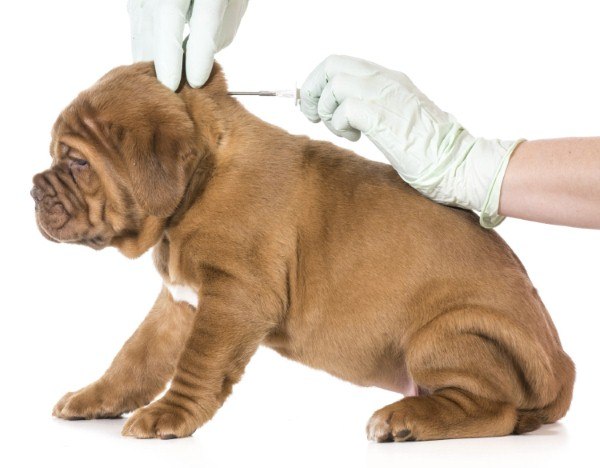 Whether you're on the cusp of bringing home your very first pooch or you and your faithful friend have been inseparable for years, microchipping is a term you are likely to have heard a lot recently, largely because of an impending change in the law that will make it compulsory.
Whether you're on the cusp of bringing home your very first pooch or you and your faithful friend have been inseparable for years, microchipping is a term you are likely to have heard a lot recently, largely because of an impending change in the law that will make it compulsory.
If your dog isn't yet microchipped, you can find out all about it below.
What is microchipping?
Microchipping is essentially a more advanced way of identifying your dog. Implanted under your pet's skin, the chip contains all the information a vet would need to identify you as the owner and contact you - much like a tradition collar and tag. But unlike a collar and tag, microchips offer a much more permanent solution, and cannot be lost or removed by either your pet or potential thieves.
Microchipping your dog will soon be law
Microchipping your dog will be a legal requirement in England from April 2016, and in Wales from a date yet to be announced. This means that every dog owner will need to ensure each of his or her dogs has a microchip implanted, regardless of how long you have had him for.
Your pooch will still need to wear his usual collar and tag by law, so don't be tempted to abandon the traditional methods of identification!
The benefits of microchipping your dog
The most obvious benefit of microchipping your dog is that it increases the likelihood and speed of him being returned to you should he be lost or stolen. But there are plenty of more subtle benefits too.
These include the fact that, if he becomes lost and is taken to a vet with an injury, it will be easy for them to contact you to get the go-ahead for emergency surgery.
Microchipping also acts a theft deterrent, and means that all puppies are traceable to a breeder, potentially helping to tackle the problem of puppy farming. It is also expecting to assist in the fight against animal cruelty, as it will make identifying the owners of suffering dogs easier.
How does microchipping work?
The thought of your pet going through any kind of medical procedure probably fills you with nerves - but fortunately, microchipping is incredibly quick and simple, and will not hurt your dog. Indeed, your pooch will notice no difference between this and a standard vaccination.
So, how does the procedure work? Using a specially designed implanting device, the vet will inject the microchip, which is no larger than a grain of rice, through a sterile needle under your dog's skin, between his shoulder blades.
Then, you simply need to register your chip. Your vet may submit your forms for you, but even if this is the case, it's a good idea to double check that your chosen microchipping database definitely has all your details.
How to get your dog microchipped
You can get your dog microchipped by your vet. At the time of writing, it is also possible to have the procedure carried out for free by Dog's Trust, who are offering this service ahead of the law coming into effect to help make sure all dog owners have the opportunity to get their dog chipped.
Remember to update your details
Your dog's microchip will need virtually no maintenance - there are just two things to remember to do. The first is to get your vet to check the chip is still working every so often, just in case.
The second is to update your details any time they change - such as your address and telephone number. If your dog goes missing and your information is out of date, this renders your microchip effectively useless.
It's easy to update your information. Exactly how you can do it will be depend on which database your chip is registered to, but there will usually be online, telephone and postal options.
Written by: Hannah








